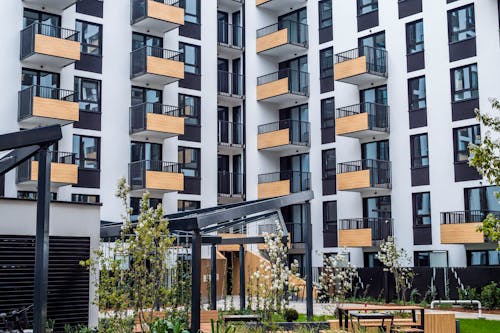
Multifamily investing is changing—and fast. So, the real estate market needs to adapt because population movement, aging populations and changes in living patterns occur. Proper investment decisions rely heavily on predictable future shifts in populations and demographics. This article examines how population shifts determine multifamily investing patterns while identifying emerging market trends for investors who want to succeed.
Why Demographics Matter in Multifamily Investing
Demographics are all about people. The demographic information shows us where people reside along with their age range and income statistics and property preferences. These demographic facts guide investors when it comes to purchasing properties as well as deciding whether to construct new buildings–usually through a construction loan–or maintain distance from such investments.
Naturally, the trend of young adults renting real estate properties makes small urban apartments sensible investment opportunities. Ultimately, senior individuals who are downsizing toward retirement will find better homes in peaceful locations that cater to their needs.
Rental income as well as occupancy rates and property value depend on demand which is directly influenced by demographics.
Big Demographic Trends Driving Multifamily Investing
So, let’s look at the top demographic shifts shaping today’s multifamily market.
1. The Rise of Millennial and Gen Z Renters
Millennials who were born between 1981 and 1996 alongside Generation Z individuals born afterward have become the major demographic group currently renting properties. The younger generation extends into two groups: Millennials born from 1981 to 1996 and younger Generation Z groups. These two groups collectively make up the largest segment of renters who remain unmotivated and unqualified to purchase homes. Together with rising education costs and their particular housing preferences, the high property values force them to continue residing as renters.
These demographic groups choose urban environments combined with neighborhoods they can walk through and modern housing designs. Thus, people who prefer smart home properties along with high-speed internet access near their desired amenities are drawn to such residential developments.
The increasing number of members in this demographic group will drive up demand for new multifamily apartments in convenient locations.
2. Ageing Baby Boomers
The group known as baby boomers which arrived between 1946–1964 approaches their senior years. Many are now empty nesters. The goal of these individuals is to sell larger properties to purchase smaller rental units that require minimal maintenance. Besides comfort and safety they seek community as part of their lifestyle.
Therefore, the rising demand for active adult communities and senior-friendly apartment complexes is causing their popularity to increase. Energetic investors interested in these particular units can fulfill increasing demands from a market segment that is expanding quickly.
3. Changing Household Structures
Moreover, families are changing too. Today, there are more single-person households, more unmarried couples, and more roommates. People are getting married later—or not at all. Divorce rates are still high.
This means the typical “family-sized” home is not always in demand. Instead, smaller units, studios, and one-bedroom apartments are often more attractive.
Hence, multifamily investing in properties with flexible layouts and shared spaces is becoming more common. It helps meet the needs of these non-traditional households.
4. Urban to Suburban Shift
Yes, young people love cities. But recently, more people are moving to the suburbs. Why? Because they want more space, lower costs, and better schools. The COVID-19 pandemic sped up this trend too, as remote work became more common.
Investors should watch suburban areas near big cities. These places are seeing strong growth in demand for rental housing, especially multifamily units with home offices and green space.
5. Immigration and Population Growth
Furthermore, immigrants play a huge role in rental property investing. Many new immigrants rent before they buy. According to Pew Research, immigrants and their families will account for most of the U.S. population growth in the next few decades.
This adds fuel to the rental market—especially in gateway cities and growing metro areas. Multifamily investors should look at locations with high and steady immigration flows.
What These Trends Mean for Multifamily Investing
Consequently, all these shifts point to one thing: multifamily investing is full of opportunity, but only if you keep up with the times. Here’s how you can stay ahead.
Location Is Everything
Firstly, look at markets where the population is growing. Cities like Tampa, Austin, Charlotte, and Nashville are attracting young professionals and families alike. More people means more renters—and more demand for apartments.
Focus on What Renters Want
Secondly, amenities matter more than ever. High-speed internet, package lockers, pet-friendly units, and on-site gyms are just a few must-haves. In fact, properties with modern perks often rent faster and for higher prices.
Also, think about layout. Renters want open floor plans, good lighting, and energy-efficient appliances. Offering these features helps reduce vacancy and increase ROI.
Adapt to Technology
Moving further, younger renters expect digital convenience. Online rent payments, virtual tours, and smart thermostats aren’t just nice—they’re expected. If your property can’t keep up, renters will go elsewhere.
Watch Policy Changes
Lastly, laws on rent control, zoning, and tenant rights vary by state and city. These rules can impact your returns. Stay informed. And consider working with local experts, like Loan Locker in Tampa, Florida, to help you navigate these changes.
The Role of Private Lenders in Multifamily Investing
Now, fast-moving trends mean you need fast-moving capital. Traditional banks can be slow, strict, and stuck in the past. That’s where direct private lenders like Loan Locker come in.
Luckily, Loan Locker gives investors access to fast, flexible funding—without the red tape. Whether you’re buying, renovating, or expanding, having the right lender can make all the difference. In growing markets like Tampa, speed and control can be your biggest advantages.
Final Thoughts: Multifamily Investing
To wrap it up, the demographic shift in society impacts both multifamily investment markets. Each generation including Gen Z tech-savvy individuals and downsizing baby boomers seeks different features in the rental homes they choose.
So, being informed about these real estate tendencies presents great importance for investors. Pay close attention to the people who rent while tracking their destination choices and examination of rental preferences. You will detect opportunities ahead of others through this method.
Your success depends heavily on selecting an appropriate funding partner because this will be critical to your achievement. By hiring Loan Locker you gain speed and develop better investment strategies to advance ahead of competing investors.

